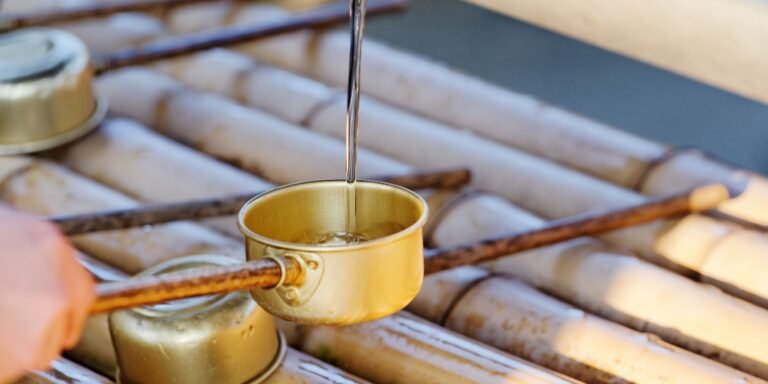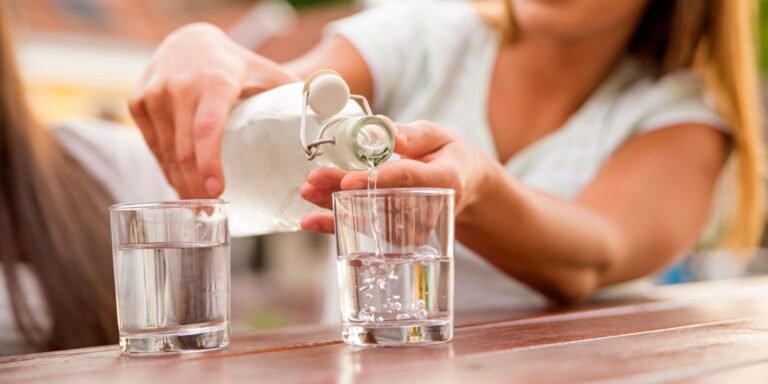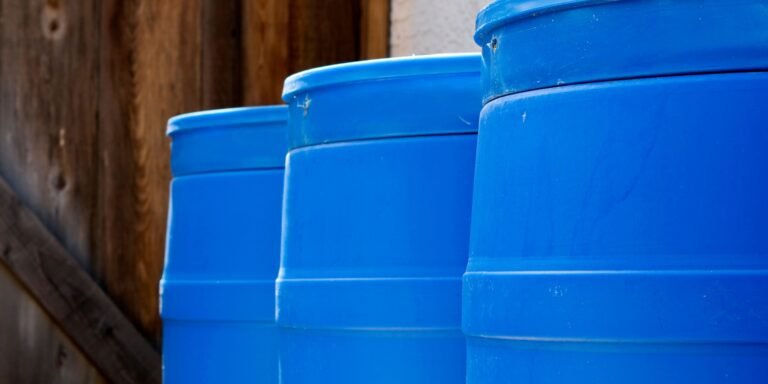How To Make Salt and Seawater Drinkable
This post may contain affiliate links, full disclosure here.
Water covers roughly 71 percent of the Earth’s surface, but only about 2.5 percent of that is freshwater. Of course, this means that the vast majority of the water on Earth is seawater or saltwater. Given this information, one might wonder, “Can saltwater be made drinkable?” The goal of this article is to look into different methods for making saltwater drinkable.
The process of converting saltwater into drinkable water is known as “desalination.” This method is increasingly being used around the world to provide people with much-needed fresh water.
What exactly is desalination?
Desalination is the process of removing salts from saline (salt) water in order to provide fresh water. Desalination of saltwater yields water suitable for human consumption, sanitation, or irrigation.
Many seagoing ships and submarines use desalination. The majority of the modern interest in this process is focused on developing a cost-effective supply of freshwater for people to drink and use. This method of providing fresh water for people to drink and use is becoming more popular.
Can you boil salt water to make it drinkable?
Boiling water does not make it drinkable.
No, simply boiling saltwater will not make the water drinkable. Desalination is a process that involves more than just boiling salt water to remove salt from water. Before the water is drinkable, the salt must be separated from it, and boiling water will not do this permanently.
A water temperature of 158°F (70°C) kills 99.999 percent of bacteria, pathogens, protozoa, and viruses in less than one minute, according to the World Health Organization (WHO). Because water boils at 212°F (100°C), it is safe to drink by the time it has reached a full boil, unless it is saltwater.
To make seawater drinkable, you must not only decontaminate and purify it but also remove the salt. Drinking large amounts of sea or saltwater can be fatal due to the strain it places on your organs. Your kidneys have no choice but to work overtime to filter out the salt, not to mention that water with a high salt content will never rehydrate you. There are several ways to separate salt from water using basic equipment, as well as other methods that do not require the use of expensive equipment that involves boiling the water. However, instead of simply boiling the saltwater, you can boil it and collect the steam, implying that you distill it.
Simple methods for making sea or saltwater drinkable from home
Here are five methods for making sea or saltwater drinkable. The first three methods I’ll discuss will be fun and innovative ways that can be done with basic household items. The last two methods involve the use of two different but useful devices that are available for purchase.
- Use a pot, lid, stove, and metal cup on the stove top.
- Use a large bowl, a cup or smaller bowl, a sheet of plastic, and a small pebble or rock for solar desalination.
- Use a bowl or container, a plastic sheet, and small rocks for solar desalination.
- Megahome Countertop Water Distiller Aquamate Solar Still Emergency Water Purification Inflatable Kit
3 ingenious DIY methods for making sea or saltwater drinkable using common household items
Use a pot, lid, stove, and metal cup on the stovetop.
Desalination by solar energy: A large bowl, a cup or smaller bowl, a sheet of plastic, and a small pebble or rock are all required.
Use a bowl or container, a plastic sheet, and small rocks for solar desalination #2.
Stove Top: Use a pot, lid, stove, and metal cup
- Pot
- Lid (The pot at lid should go together and make sure the lid’s handle is in the middle of the lid)
- Metal or Pyrex cup
- Stove
Place a metal cup (or another type of cup that can withstand high temperatures) in the center of the pot, then slowly pour the saltwater around the cup. Make sure there is no saltwater in the cup because this is where your freshwater will be collected. Then, upside down on the pot, place a lid with a handle in the center, so that as the water steams (evaporates), the lid will catch the water particles and drip down off the lid handle and into the cup.
- Check that the pot lid has a good seal with the pot’s edges.
- Without a good seal, much of the steam will escape, reducing the supply of fresh water vapour.
Then, gradually bring the water to a boil. Set your stove to low heat so that the water does not splash around and into your cup. You should also leave a good amount of space between the top of your cup and the water level in the pan.
Keep an eye on the water as it begins to boil and condenses. All of the dissolved salt will be left behind by the condensed water droplets that collect on the lid and drip into your cup.
This procedure could take up to 30 minutes. When the water in your cup has reached the desired temperature, turn off the heat and allow it to cool. To allow the cup to cool faster, carefully remove it from the pot. Use oven mitts or another type of protection to avoid burning yourself, and don’t throw away the freshwater you’ve worked so hard to collect.
Finally, when the water has cooled, it is safe to drink!
Solar Desalination
- Large bowl or container
- Cup or smaller bowl
- Sheet of Plastic
- Small rock or pebble
Solar desalination is the name given to the next innovative method of distilling water. To begin, gather salt or seawater in a large bowl or container. Make sure not to overfill the large bowl because you will need to place a smaller bowl in the middle of the larger bowl to hold the saltwater. Then, in the center of the larger bowl, place an empty smaller bowl or container.
Avoid splashing saltwater into the small bowl, as this will contaminate your drinking water.
Next, take a sheet of plastic wrap and wrap it around the larger bowl. Make sure the plastic wrap is tightly wrapped around the bowl to prevent any water vapor from escaping as it evaporates from the saltwater. You’ll want to use good, sturdy plastic wrap rather than a cheap wrap that tears easily or has trouble sticking.
Finally, directly over your empty smaller cup or bowl, place a small rock or pebble in the center of your plastic wrap. Use a light rock to avoid tearing or tearing your plastic wrap. Make sure your setup is in direct sunlight so that the solar desalination process can work without interruption. The sun will aid in the evaporation of the water, and the plastic wrap will catch the condensation, which will run down the plastic to the rock-weighted spot and drip into the freshwater cup. After only a few hours… the length of time is the disadvantage… it will provide you with fresh water to drink!
Solar Desalination
This is a “solar still,” which uses the heat of the sun to power a distillation process that causes dew to form on plastic sheeting or something similar.
- Make a hole in the ground.
- Place a bowl at the bottom of the pit to collect the condensed water.
- Cover the pit loosely with a plastic sheet (you can use stones or other heavy objects to keep it in place over the pit). Make sure the bottom of the plastic sheet is directly over the bowl.
- Water can be collected from the bowl in the morning if your water “trap” is left overnight.
It is important to note that direct sunlight is required for this process to work properly, just as it is for the # 2 method of using a bowl inside a smaller bowl. The exciting aspect of this solar desalination process is that it only requires one water collection container, a plastic sheet or similar material, and rocks. Super easy and straightforward! The disadvantage, as with all other methods, is that it takes several hours, so be patient.
Aquamate Solar Still Emergency Water Purification Inflatable Kit
The advantages of this Aquamate blowup water purification kit include the fact that it comes in a small, portable, inflatable package, and what I like best about it is that it does not require any power or electricity. The sun fuels the desalination process. It does not have to be submerged in water, but saltwater must be placed in the device for it to function, similar to the solar desalination method discussed above. We discovered that while this product is simple and effective, it is extremely slow!
13 in. x 11 in. x 3.5 in. Dimensions: 13 in. x 11 in. x 3.5 in. The weight is 38 oz.
This product is very simple to use and extremely useful to have on hand if you ever need to convert saltwater.
The Aquamate water purification kit’s one drawback is its excruciatingly slow speed.
Megahome Countertop Water Distiller
In about 5 hours, this Megahome converts 1 gallon of water into steam, which is then condensed into distilled water. The interior of the boil chamber, including the upper cover and condensing coils, is made of stainless steel. It includes a 1-gallon glass collection bottle with a detachable lid. It does provide a simple and automatic method of distilling your own water; simply fill the boiling chamber with water and press the button. The distiller will shut down automatically at the end of the cycle. This distiller’s exterior is made of metal with a white-baked finish.
This unit has proven to be extremely useful in distilling and purifying contaminated or saltwater into clean water. The meter read 102 ppm when I tested tap water with a Total Dissolved Solids (TDS) tester (even after being pre-filtered by a Whirlpool Chemical reduction filter). The meter read 0 ppm after distilling the water with the Megahome distiller. It works flawlessly.
*ppm is an abbreviation for parts per million, which is the concentration of something in the water.
As of now, I’ve discovered very few issues with the device, with the exception that it requires power to operate, whereas the Aquamate Solar is powered by the sun.
How much seawater can I safely drink?
The best answer is none; however, it depends on your current level of hydration, but it is strongly discouraged that you drink any. Even a single swallow of seawater has the potential to make you sick to your stomach and cause you to vomit. Drinking saltwater will, at the very least, bring you one step closer to dehydration.
Anyone who has swallowed water while swimming in the ocean knows that it will not kill you; however, if you are thirsty and drink seawater, it will not satisfy your thirst but will increase it. It will also cause you to urinate more frequently in an attempt to neutralise or normalise your body’s salt levels.
Our bodies are finely tuned machines with lots of backup systems in place. Sodium is one of many substances that our bodies need to function properly. Not surprisingly, our bodies have lots of backup systems to keep the sodium levels in our blood exactly where they need to be.
Most of us know that too much salt in our diets is bad for people with high blood pressure. But most people don’t realize that salt actually can be poisonous. Taking in a lot of sodium can overwhelm our back-up systems and cause dramatic increases in sodium levels. That’s true if we take it all at once, or if we take in large amounts over a period of days or weeks.
– NCPC (National Capital Poison Center)
Can drinking salt water make you throw up or vomit?
Yes, drinking salt water can cause you to vomit. People used to use salt to make themselves vomit after being poisoned, but this is a dangerous practice that has killed some. Simply put, the NCPC does not advocate drinking salt water to induce vomiting for any reason.
If you drink seawater, how much freshwater do you need to drink to offset the seawater you drank?
According to the answers I found, you would need to consume more than double the amount of distilled (no salt) water than you did seawater to neutralise without adding any hydration.
If we mix one litre of distilled (no salt) water with one litre of seawater, we get 17.5 grammes of salt for each litre of water present. This is still significantly more than the recommended daily salt intake. According to Healthline.com, “health experts recommend between 1.5 and 2.3 grammes of sodium per day.” However, mounting evidence suggests that these guidelines may be too lenient.
People with high blood pressure should not consume more than 7 grammes of salt per day, but if you’re healthy, the amount you’re currently consuming is probably safe.” To compensate for 1 litre of seawater, you should drink more than 3 litres of water, but drinking too much water at once is dangerous and strongly discouraged.
Essentially, there are numerous variables to consider, as well as some controversy. Finally, it is undeniable that if getting fresh water is difficult, drinking even a small amount of seawater will not quench your thirst. There is no safe amount of seawater to drink if you are in a survival situation.
What are the side effects of consuming saltwater or seawater?
Consuming too much saltwater or seawater can have a number of negative consequences. These are some of the possible side effects:
- Dehydration
- Increased High Blood Pressure
- Calcium deficiency
- Nausea
- Weakness
- Delirium
At the most extreme, your ability to cope will deteriorate as you become dehydrated. If you do not drink enough water to counteract the effects of excess sodium, the brain and other organs will receive less blood, resulting in coma, organ failure, and death.
Does drinking saltwater or seawater make you crazy?
Simply put, if you try to drink salt water as your primary source of water, you may become dehydrated and eventually develop delirium. So, yes, drinking too much sea or saltwater can drive you insane!
Is it a good idea to do a Saltwater Flush?
I’ve heard that doing something called a Saltwater Flush can be beneficial to your health… However, it appears that this practice is somewhat contentious, and I would advise against it. Drinking a mixture of warm water and non-iodized salt is referred to as a saltwater flush. The combination of salt and warm water has a laxative effect. It usually causes urgent bowel movements within a half-hour to an hour, but it can take longer. Participating in the saltwater flush may cause dehydration, increased blood pressure, calcium loss, nausea, and delirium, as well as the other potential side effects I mentioned above.
If you have any of the following conditions, do not perform a salt water flush:
- heart problems
- diabetes
- edema
- kidney problems
- high blood pressure
- gastrointestinal issues, such as ulcers or inflammatory bowel disease
There appear to be only two reasons to try the saltwater flush. First, you are chronically constipated, or you have irregular bowel movements. If you decide to give it a shot, proceed with caution.
Can Drinking Salt Water or Sea Water Make You Sick Bottom Line
It is important to note that seawater can be made drinkable using a simple technique known as desalination. However, in general, a good rule of thumb is to avoid drinking sea or saltwater. Of course, small amounts of saltwater will not kill you, but salt and water should be consumed separately. Remember, a small amount of salt is beneficial, and plenty of fresh water is required!
How To Make Salt and Seawater Drinkable Bottom Line
One of the five methods suggested above can be used to convert seawater or salt water into fresh drinking water. Given that the Earth is made up of roughly 71% water, the majority of which is saltwater, it is useful to understand how to convert saltwater into drinkable water. This process can be slow and painful to watch, but if you’re interested, I recommend you try one or all of them. We enjoy using easy (EZ) ways to prepare for emergencies, so we recommend the Aquamate Solar Inflatable Kit and the Megahome Water Distiller. Knowing how to convert saltwater into fresh drinking water is empowering, and having the two items mentioned above to make it happen is convenient.
Sources
- Gross, Cliff, Josh DeZeeuw and Ted Simpao. “Awesome Osmosis.” Marine Discovery. The University of Arizona. April 27, 2001. (Jan. 30, 2012) http://marinediscovery.arizona.edu/lessonsS01/blennies/2.html
- Marine Science. “Seawater Composition.” Oct. 8, 2008. (Jan. 30, 2012). http://www.marinebio.net/marinescience/02ocean/swcomposition.htm
- McLamb, Eric. “Earth at a Glance.” Ecology. Sept. 14, 2011. ( Feb. 4, 2012) http://www.ecology.com/2011/09/14/earth-glance/
- Ocean Plasma. “Chemistry of Seawater.” Ocean Health. (Jan. 30, 2012) http://oceanplasma.org/documents/chemistry.html
- Science Learning Hub. “Ocean Salinity” June 22, 2010. https://www.sciencelearn.org.nz/resources/686-ocean-salinity
- Stoppler, Melissa Conrad. “Electrolytes.” MedicineNet. ( Feb. 4, 2012) http://www.medicinenet.com/electrolytes/article.htm
- Wedro, Benjamin. “Deyhdration.” MedicineNet. ( Feb. 4, 2012) http://www.medicinenet.com/dehydration/article.htm







